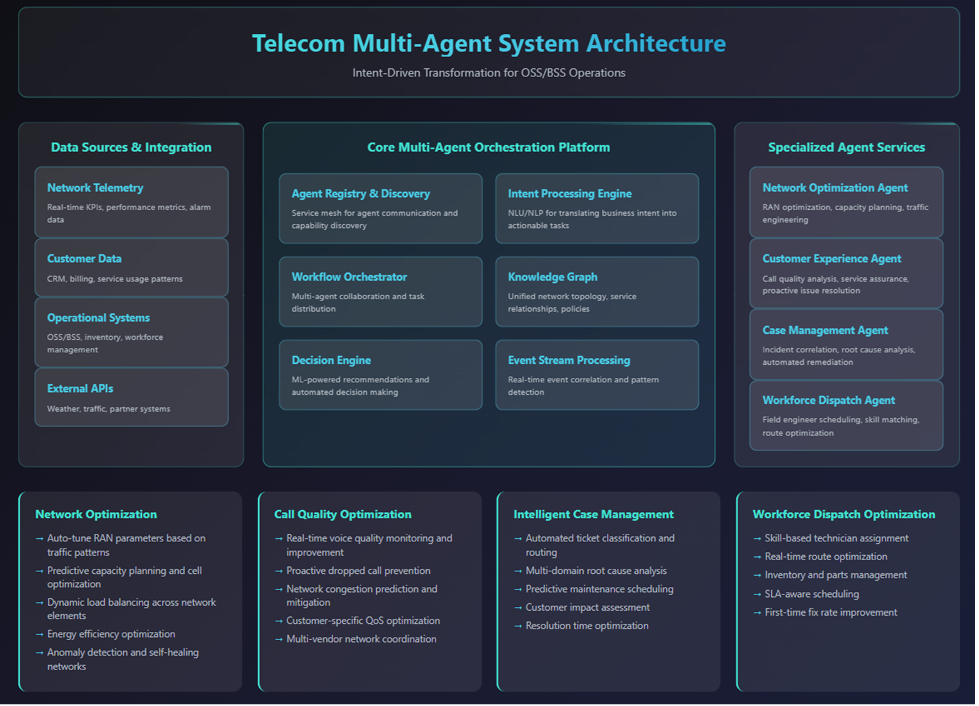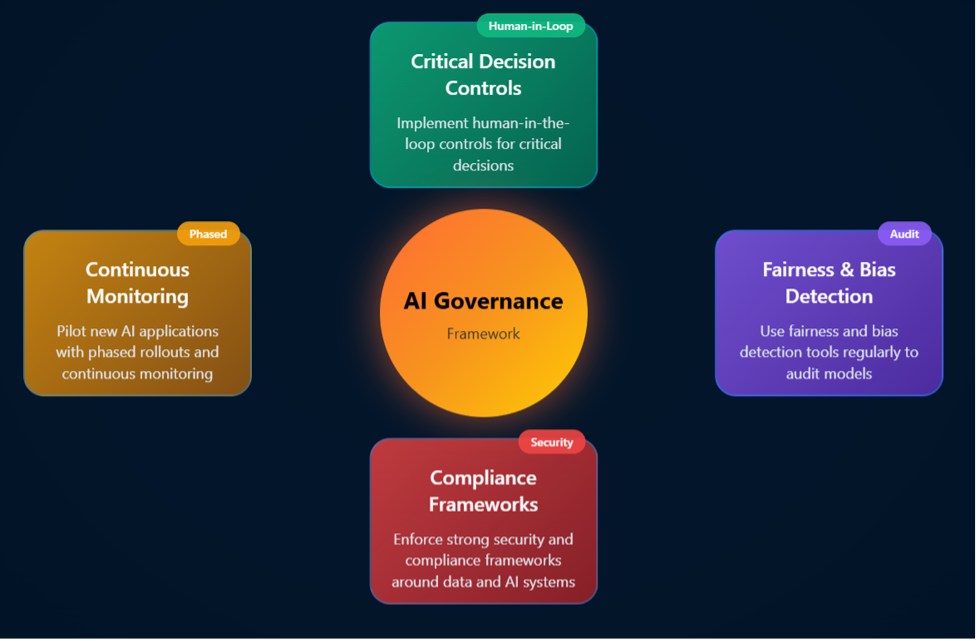
By Holt Hackney
Artificial intelligence is reshaping how telecom operators design, run, and evolve their networks. The challenge is not the promise of AI, but how to architect it responsibly, integrate it with legacy systems, and ensure governance in high-stakes environments.
At a recent Global AI Community session, Anil Pantangi, a recognized leader in AI and enterprise transformation, presented a vision for “telecom transformation in a box.” Drawing on more than a decade of experience across telecom and enterprise AI, Pantangi outlined both the technical blueprints and governance frameworks required to move the industry from pilots to scalable, trusted adoption.
Architecture: Transformation in a Box
Central to Pantangi’s presentation was a modular architecture blueprint for operationalizing AI in telecom OSS/BSS workflows:
- Intent Layer (GenAI): Accepts natural language commands, making complex telecom operations accessible to non-specialists.
- Agent Layer: A multi-agent system that plans and executes tasks such as provisioning, outage management, and customer support.
- Integration Layer: Interfaces with OSS/BSS, telemetry, and configuration systems to enable closed-loop automation.
- Governance Layer: Provides observability, trust, compliance, and evaluation, ensuring AI actions align with regulatory and operational requirements.
This “transformation in a box” approach enables experimentation and scaling without dismantling existing infrastructure. It embeds agility, interoperability, and accountability principles often missing in legacy monoliths. As Pantangi explained, “Telecom networks are the backbone of our digital world. If we want AI to be more than a pilot project, we need an architecture that embeds trust and oversight by design, not as an afterthought.”
Data and Multi-Agent Workflows
Telecom environments generate petabytes of multi-modal data daily. Traditional silos hinder real-time decision-making. Pantangi highlighted the role of event streaming platforms, such as Apache Kafka and Pulsar for scalable, low-latency pipelines and enrichment layers to provide context-rich inputs for AI systems.
Multi-agent coordination then becomes the differentiator. Key use cases included:
- Outage detection and resolution using telemetry-driven event streams.
- Automated provisioning for 5G and edge workloads.
- Proactive fault detection that reduces outages by up to 40 percent.
- GenAI-powered customer interactions are turning network insights into personalized experiences.

One executive attendee observed that the anomaly detection framework Pantangi presented “felt like the missing piece” for diagnosing chronic network issues, highlighting the practicality of his architectural approach.
Governance by Design
Governance was a central pillar of the session. Pantangi emphasized observability, explainability, and human oversight as critical for AI-driven telecom. Telemetry captures decisions, network state, and system health in real time, providing a foundation for AI accountability as outlined in Pantangi’s published work. Examples included BT Group’s governance framework, integrating monitoring dashboards and explainability tools to ensure regulatory compliance.

“AI cannot be a black box in telecom. Operators need the confidence to know not only what the system did, but why it did it, and when to intervene,” Pantangi said.
From Efficiency to Revenue
AI adoption goes beyond cost savings. Automation reduces manual tasks by up to 60%, improves uptime, and enhances the customer experience, ultimately leading to lower churn rates. Case studies from Telefónica and Vodafone demonstrate tens of millions of dollars in annual savings, freeing resources for reinvestment in customer-facing innovation.
Looking Ahead
Pantangi will expand on these themes in an upcoming virtual session hosted from Cologne, Germany. The discussion will shift from architecture to strategy, covering adaptive routing, intent-driven services, and global AI governance standards.
By combining technical rigor with governance and strategic insight, Pantangi’s work arguably provides a model for telecom leaders balancing innovation, compliance, and trust. We hope to continue to share his insights in the pages of A&G.
